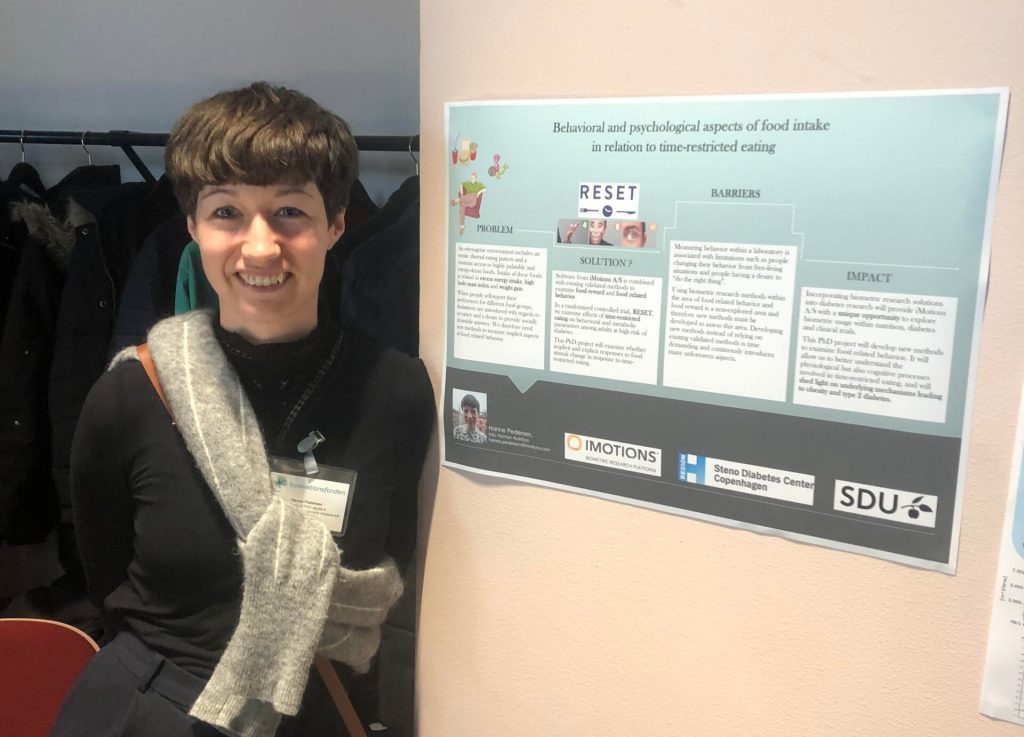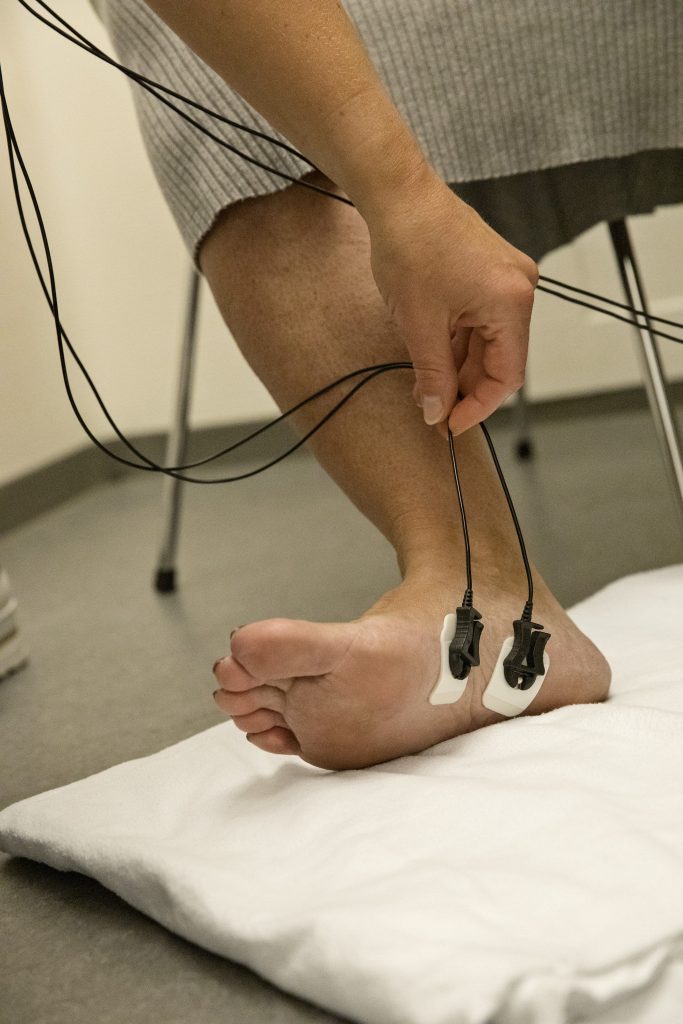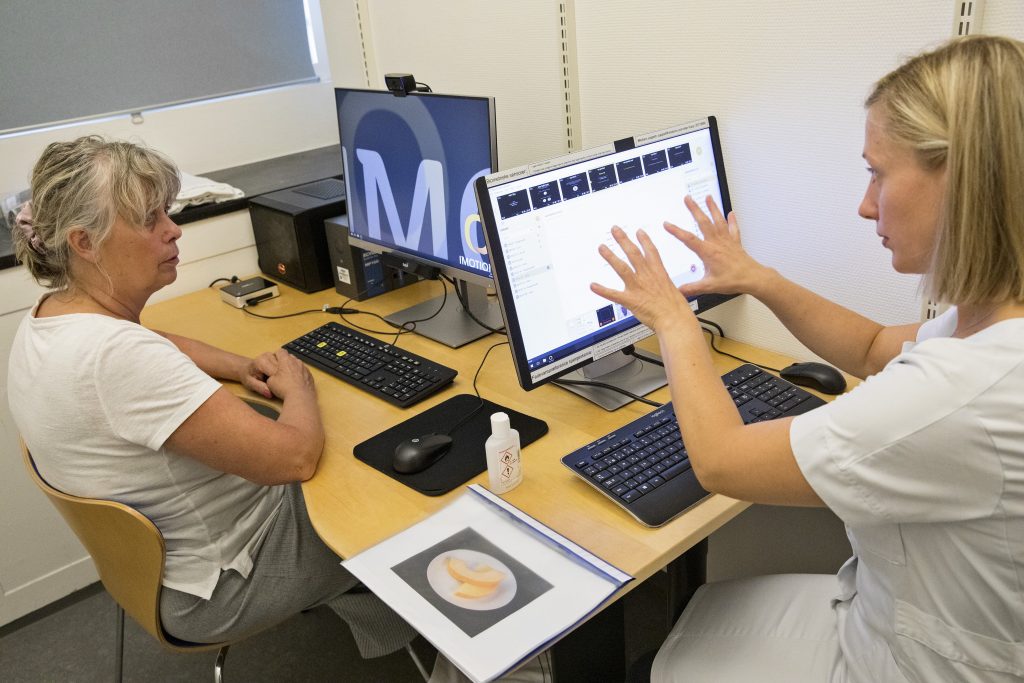Navigating food intake can be an everyday minefield of choices: what should I eat, when, and how much? Understanding our relationship with food, from what we like and why, to our motivations surrounding eating, can be a rich source of inquiry for researchers, especially in light of the obesity epidemic, to which the seemingly endless food options may have contributed.
Many research groups recognize the urgent need to study food choice and intake as possible drivers of rising obesity levels, but researchers using iMotions at the Steno Diabetes Center Copenhagen (SDCC) are bringing a new part of the equation to the forefront: behavioral and physiological measures. We recently talked with Hanne Pedersen, Industrial PhD student with iMotions, and first author of a new publication, about her work with SDCC and iMotions in developing a new method for understanding the behavioral aspects of eating.

Combining Well-Established and New Methodologies
The Steno Diabetes Center Copenhagen embarked on this research project thanks to generous grants from the Novo Nordisk Foundation and Innovation Fund Denmark. They knew they wanted to look at time-restricted eating from different angles, which is a type of intermittent fasting where your eating window is limited to around six to ten hours a day. The goal is to understand if there are alternative ways of losing weight and improving your health by eating at set times of day and reducing your eating window. They had heard about and gotten into contact with iMotions through the grapevine, but the details of the behavioral study aspects of the project were still quite fluid.
When Hanne Pedersen applied as a PhD student, she just happened to already have worked with Professor Graham Finlayson at the University of Leeds on his well-established methodology called the Leeds Food Preference Questionnaire, which has often been used in clinical settings. It asks participants to rank foods and measure their reaction time during a forced-choice task. Hanne describes the brain child of the idea like this:
“At Steno, they knew about this method that they developed in Leeds, because the method was already well established within the research field on appetite. At Steno, they had the idea about combining it with these more psychophysiological measures also. So after I started my PhD we started developing a new methodology, which came to life through collaborations both with Professor Finlayson at Leeds, and with my company supervisors at iMotions.”

Studying Food Reward: The Problem with Traditional Methods
Researchers working with food preference and specifically food reward have used the established basic constructs called “liking and wanting,” which links the feeling of reward to pleasure, but the motivations behind this are hard to define. Hanne gives the example of apples vs chocolate:
“For instance, say that overall, you have a high liking for apples, and you maybe also have a high liking for chocolate, i.e. you feel pleasure from the taste of the foods. But your wanting for a food is more related to the motivational drive to actually eat the food in a given situation. If you’re met with both an apple and a chocolate at the same time, you may suddenly not feel the motivation for eating the apple. Even though you like the taste of the apple you don’t necessarily in that moment have a wanting (motivation) towards apples.”
Liking and wanting often go toward the same direction in food choice, but they sometimes also dissociate – for example, after you’ve eaten a big meal, you may have a low liking for both savory and sweet foods but are still drawn towards sweet foods despite not being hungry.
This is what’s challenging to measure with traditional methods, because researchers are reliant on asking participants through self-report due to the difficulty of measuring implicit aspects. Although the Leeds Food Preference Questionnaire provides an implicit wanting score, Steno Diabetes Center Copenhagen found a way to incorporate even more behavioral aspects of food choice by creating the Steno Biometric Food Preference Task. The new methodology combines the Leeds methodology with measuring eye tracking, facial expression analysis, and electrodermal activity as a way to solve for these persistent limitations.
“A lot of the existing methodologies are limited by people needing to click a mouse or perform an actual behavior that is partly cognitively demanding. So therefore, it was very interesting to include the different biometric technologies that can be combined in the iMotions software,” Hanne Pedersen said.
Insights from Eye Tracking in Time-Restricted Eating
The exploratory study has now passed its first round, where 100 people with normal weight have tested the Steno Biometric Food Preference Task. Participants in the observational study are measured in fasting states while they are shown images of a variety of sweet/savory and high-fat/low-fat foods on a screen. Meanwhile, eye tracking, electrodermal activity and facial expressions are recorded in iMotions. Using the Leeds methodology which the team integrated into iMotions, participants are also asked how much they like the foods, and then their consumption of those foods is monitored in a buffet meal. The next round will apply the same parameters in the randomized study on time-restricted eating in 100 participants with overweight and obesity.

So far, in people with normal weight, Hanne Pedersen and the Steno team have already uncovered some interesting insights from eye tracking. They’ve found that if participants had a longer duration of visual attention on an image of a food, that was associated with also eating more of that type of food. This can potentially have major implications for understanding eating behaviors and interventions, as Pedersen elaborates on:
“It’s really interesting because it’s a marker before you actually eat, and there’s so much behavior related to food that goes on before you eat the food. You make important decisions around food from all the cues in our so-called obesogenic environment, both at home, at the grocery shops, on the street, and so on. Results from our first study show that there is a relationship between how long our participants keep their attention to a food cue and how much they eat of these foods. That’s very interesting and shows a potential for bringing this focus into behavioral interventions in the future.”
Conclusion
Overall, Hanne Pedersen is excited by the increasing attention clinical researchers are paying to psychobehavioral methods in studying appetite and obesity. She sees growing interest in working across academic sectors to bring these methodologies, including iMotions, into more clinical and metabolic research settings. Ease of use of the platform is especially relevant for researchers like Hanne: “As clinical researchers with physiological and metabolic backgrounds, the technological work can be challenging to implement in studies. Working with iMotions software, combining every measure in one, is a very convenient solution and provides us with extensive possibilities of looking more into people’s behavioral responses to food.”






